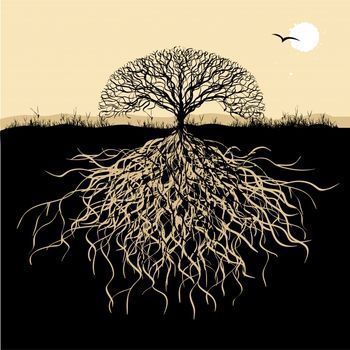
What Winter Trees Can Teach Us About Connection and Rest
As many of our native trees loose their leaves to the autumn and winter, these seasons offer a chance for communities to gather and celebrate the wonderful trees located in our neighbourhoods. Right now, it's National Tree Week 2017 and in the first week in December there’s Tree Dressing Day which is growing in popularity.
Most trees carry a story of some kind and significance: from knowing who decided to plant the tree in the first place to knowing more about who the person was and how they lived; every tree contains the seed of a story.
In my late thirties I was drawn to trees and was eager to learn more about their spiritual significance. I remember recently in my local neighbourhood spotting a group of three trees all adorned with colourful ribbons flowing from their branches. This colourful memory immediately reminded me of a custom I grew up with in the Caribbean where they would adorn trees in the same way at Christmas time. In fact that’s what used to happen to the huge Tamarind tree that sat on the corner of my Mum’s home on the island of Barbados. And then of course once one memory comes so does another and I recall the beautiful yellow ribbon that had been tied around a tree at this year's Notting Hill carnival that made my heart sing.
Tree Dressing Day was founded by Common Ground in 1990 and I love what they have to say about the cultural and social history of tree dressing on their website: “Trees have long been celebrated for their spiritual significance. The simplicity of tying strips of cloth or yarn to a tree is universal and timeless. The old Celtic custom of tying cloth dipped in water from a holy well to a ‘clootie tree’ echoes the practice in Japan of decorating trees with strips of white paper, or tanzaku, bearing wishes and poems.
The twenty-first century trend of ‘yarn bombing’ in Europe and North America transforms the local landscape with bright fabrics and yarns, like the Buddhist tradition of tying ribbons around the trunk of the Bodhi tree in homage to Buddha, or the annual Hindu festival of Raksha Bandhan when coloured strings are tied onto trees and plants to call upon the power of nature to protect loved ones.”
I wonder whether there are any links between these customs of tree dressing and dressing a Christmas tree?
At the front of my house this year I planted a rescue Apple tree. It’s full bloom of leaves are now down to a few mustard brown leaves scattered towards the tip of the tree, fragile and flickering dangerously in the wind. My tree is a perfect tree to dress this weekend. As a gardener told me in the summer when I was lamenting the fact that my tree still hasn’t shown any sign of producing apples:“To bear apples the tree has to send all if its energy from the roots to the fruit leaving very little energy to be distributed throughout the rest of the tree.”
So for now I can delight that these winter months will give my delicate tree time to rest and hibernate so it can replenish its stores.
The similarities in all of these tree customs and festivals remind us that as a human race we hold so much throughout the depths of our long cultural and social histories that are the same.
So as many trees lay bare we can remember the connection we hold together. We can dress our trees as a way of saying thank you and as a reminder and celebration of the diversity share through our different lineages and species. Our trees are a sign of hope that even though winter may be here, we can be comforted in knowing that spring will eventually arrive. Until then we can give ourselves much needed permission to rest and celebrate our beingness. Let’s say thank you to the trees for all that they have given us throughout the year.
I’ve collated a long list of my favourite tree books you can download the list to give as gifts this Christmas season or to add to your own personal reading collection. And then of course you can always add Writing With Fabulous Trees as a bonus gift.
Any book from the list would make a meaningful gift for the nature lovers in your life.










